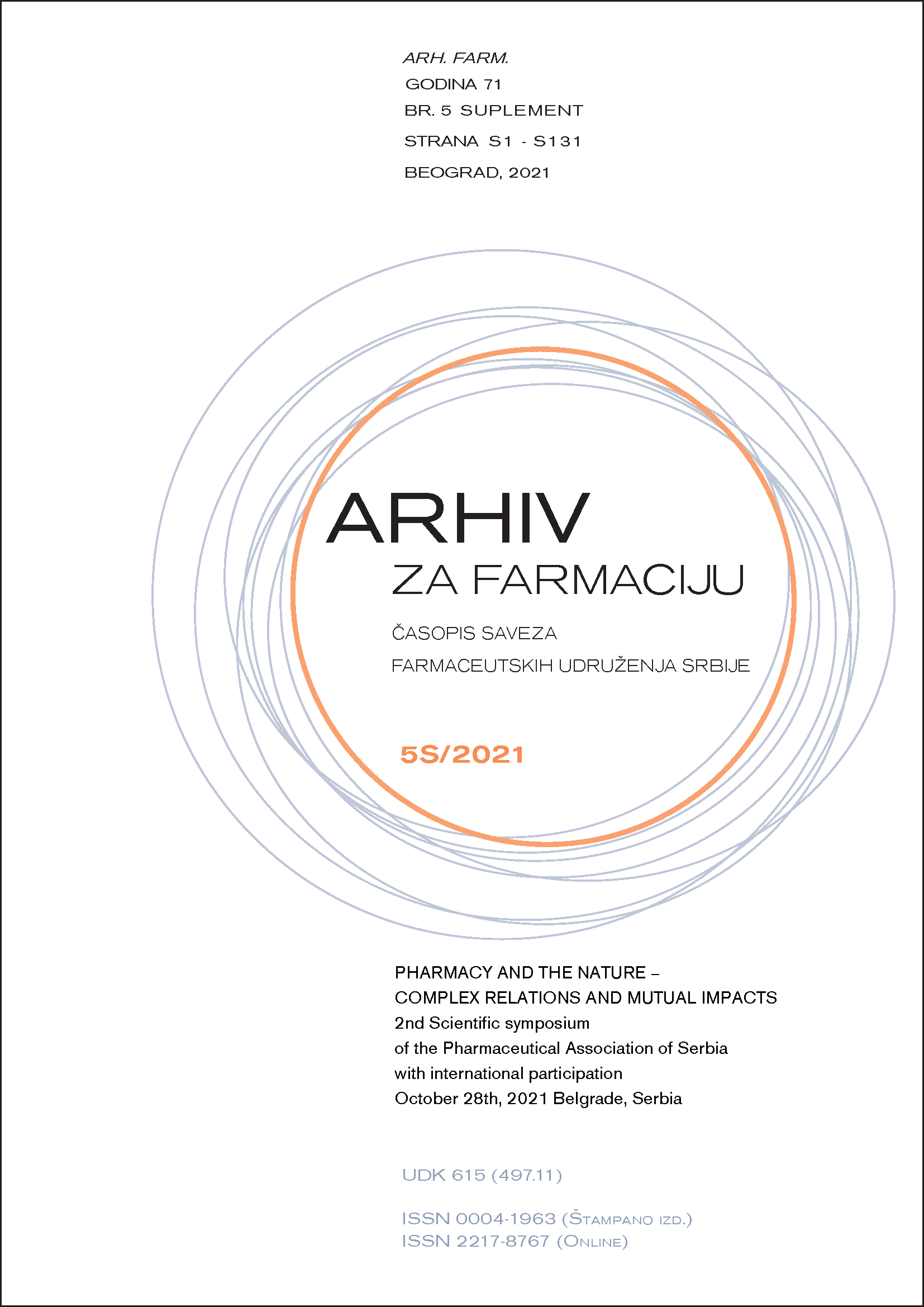DNEVNI UNOS ANTOCIJANA I POLIFENOLA KOJI SE OBEZBEĐUJE UPOTREBOM SOKOVA NA BAZI BOROVNICE
Sažetak
Zdravstvene koristi od konzumiranja borovnice uglavnom su povezane sa prisustvom fenolnih jedinjenja, a posebno antocijana, koji ispoljavaju antioksidativna, antiinflamatorna i kardioprotektivna svojstva (1). Zahvaljujući brojnim pozitivnim efektima koje borovnica ima na zdravlje ljudi, sveži i komercijalno dostupni sokovi od borovnice postali su sastavni deo zdravog načina života (2). Stoga, cilj ove studije je bio određivanje sadržaja pojedinačnih antocijana i polifenola u komercijalno dostupnim sokovima na bazi borovnice, kao i procena dnevnog unosa antocijana i polifenola, koji se obezbeđuje upotrebom ovih sokova. Analizirano je osam uzoraka komercijalno dostupnih hladno ceđenih sokova borovnice: šest uzoraka je sadržalo 100% sok borovnice, jedan uzorak je imao 55% soka borovnice (35,1% je činio ekstrakt Melissa officinalis i 9,9% agavin sirup) i jedan uzorak 35% kaše borovnice i 65% soka jabuke. HPLC-UV metoda je korišćena za kvantitativnu analizu pojedinačnih antocijana i polifenola. Dnevni unos antocijana i polifenola kroz sokove na bazi borovnice je izračunat na osnovu preporučenog unosa prirodnog soka (0,2 l/dan; preporuke USDA). U uzorcima je određeno 15 pojedinačnih antocijana. Najzastupljeniji antocijani su glukozidi i galaktozidi malvidina i delfinidina, kao i cijanidin-glukozid, sa koncentracijama do 53 mg/l. U sokovima je određeno ukupno deset fenolnih jedinjenja, uključujući fenolne kiseline, kao i jedinjenja iz grupa flavan-3-ola, flavonola, flavanona i stilbena. Fenolne kiseline su činile više od 90% ukupnog sadržaja pojedinačnih fenolnih jedinjenja, pri čemu je hlorogenska kiselina najzastupljenija u svim uzorcima, sa koncentracijom od 49 mg/l do 487 mg/l. Koncentracija flavan-3-ola katehina je bila između 0,7 mg/l i 6 mg/l, dok se sadržaj najzastupljenijeg flavonola, kvercetina, kretao između 0,8 mg/l i 12 mg/l. 100% sokovi borovnice generalno sadrže najveće koncentracije antocijana i polifenola, dok je uzorak sa 35% kaše borovnice sadržavao najmanju koncentraciju analiziranih komponenti. Kada bi unos prirodnog soka borovnice bio jednak preporučenim vrednostima, obezbedio bi se unos antocijana od 0,3 mg/dan do 63,5 mg/dan, kao i unos polifenola u rasponu od 13 mg/dan do 106 mg /dan. Ova studija je pokazala da komercijalno dostupni sokovi na bazi borovnice mogu biti značajni izvori različitih polifenola i antocijana u savremenoj ishrani ljudi. Pored toga, rezultati pokazuju da odabir soka u velikoj meri utiče na unos pojedinih antioksidanasa.
- Autori zadržavaju autorska prava i pružaju časopisu pravo prvog objavljivanja rada i licenciraju ga "Creative Commons Attribution licencom" koja omogućava drugima da dele rad, uz uslov navođenja autorstva i izvornog objavljivanja u ovom časopisu.
- Autori mogu izraditi zasebne, ugovorne aranžmane za neekskluzivnu distribuciju članka objavljenog u časopisu (npr. postavljanje u institucionalni repozitorijum ili objavljivanje u knjizi), uz navođenje da je članak izvorno objavljen u ovom časopisu.
- Autorima je dozvoljeno i podstiču se da postave objavljeni članak onlajn (npr. u institucionalni repozitorijum ili na svoju internet stranicu) pre ili tokom postupka prijave rukopisa, s obzirom da takav postupak može voditi produktivnoj razmeni ideja i ranijoj i većoj citiranosti objavljenog članka (Vidi Efekti otvorenog pristupa).

